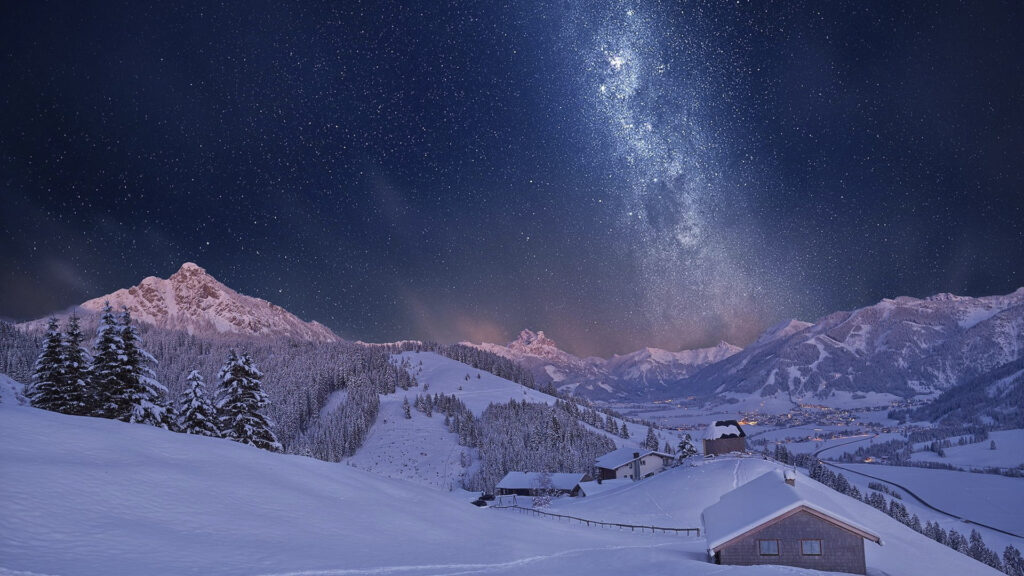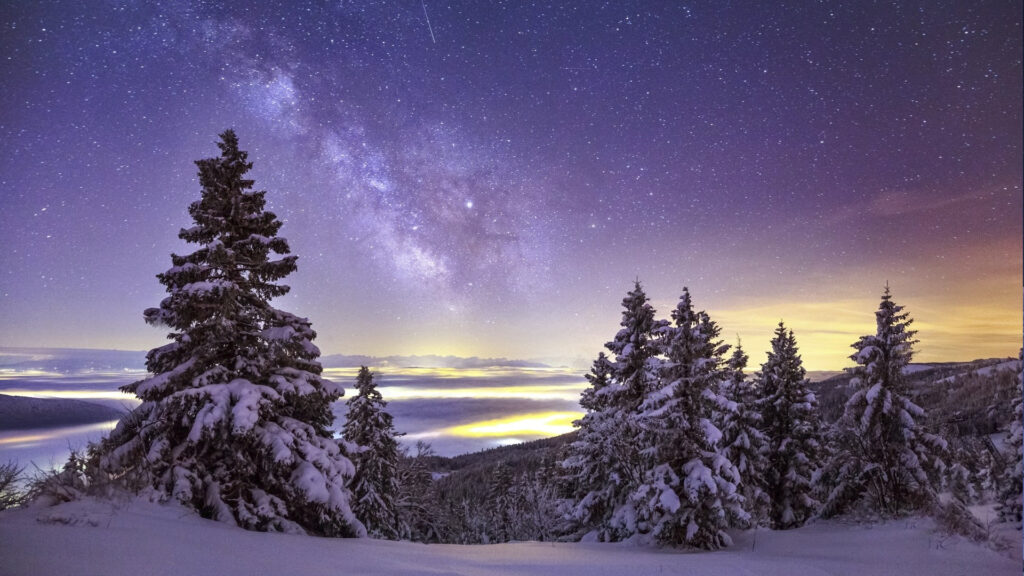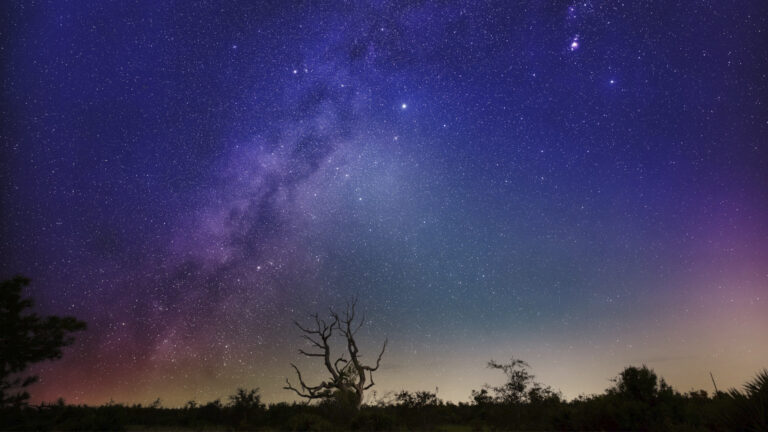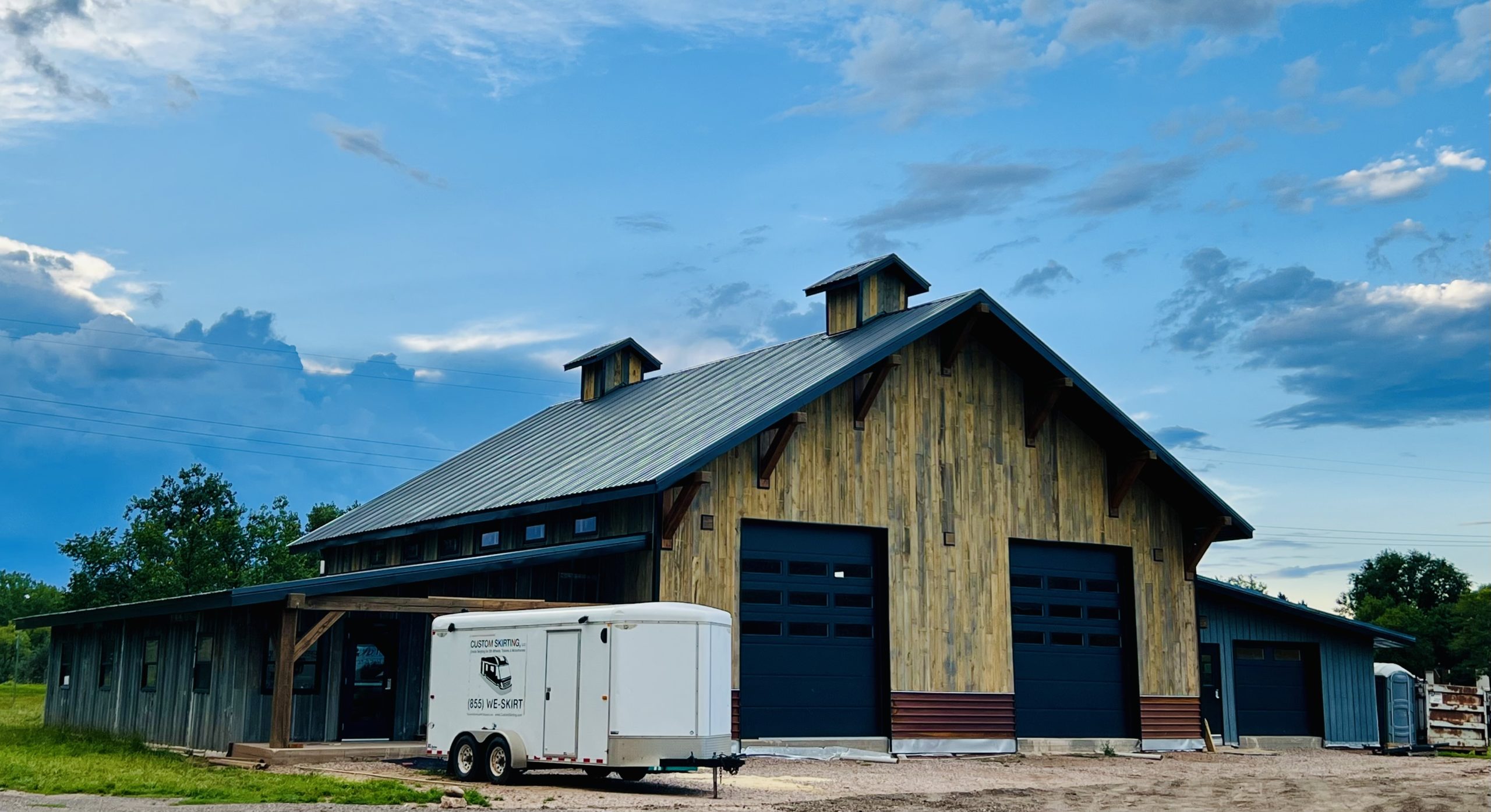Table of contents
- Understanding the Milky Way
- Best Times to See the Milky Way
- Top Locations to See the Milky Way
- Essential Tools and Techniques for Milky Way Viewing
- Tips for a Successful Milky Way Viewing Experience
- Photographing the Milky Way
- Unveil the Wonders of the Milky Way at Black Hawk Creek RV Park & Cabins
- Related Articles
The Milky Way is a stunning reminder of our place in the vast cosmos. Gazing at this glittering band of stars stretching across the night sky is a bucket-list experience for many. However, light pollution has increasingly obscured this celestial marvel, making it challenging to witness its full splendor. This guide will answer common questions like “where can you see the Milky Way?” and “where can I see the Milky Way?” while providing insights into the best places to see the Milky Way, tips on where to see the Milky Way, and the conditions needed to experience it.
Understanding the Milky Way
What is the Milky Way?
The Milky Way is a barred spiral galaxy that spans about 100,000 light-years in diameter and contains approximately 100 to 400 billion stars. It is the galaxy in which our Solar System resides, located about 27,000 light-years from its center. From Earth, the Milky Way appears as a dense band of stars due to our vantage point inside one of its spiral arms. When asking, where can I see the Milky Way, it helps to understand that its appearance varies based on your location and the time of year.
The Galactic Center
The brightest and most intricate part of the Milky Way is its galactic center, located near the constellations Sagittarius and Scorpius. This area contains Sagittarius A*, a supermassive black hole surrounded by clusters of stars. During optimal viewing conditions, the galactic center reveals an extraordinary amount of detail, making it a prime target for Milky Way enthusiasts searching for the best places to see the Milky Way.
Best Times to See the Milky Way

Seasonal Visibility
The visibility of the Milky Way varies with the seasons. In the Northern Hemisphere, the galactic center is most prominent from mid-March to mid-October. During the summer months, this region appears high in the sky, making it ideal for viewing. In contrast, winter offers a less vivid view, showcasing other parts of the Milky Way that are still beautiful but less detailed.
Optimal Viewing Conditions
For the best Milky Way experience, dark skies are essential. Aim to view during the new moon phase when the absence of moonlight ensures minimal interference. Clear weather is equally crucial, as clouds can obscure the night sky. Use tools like weather apps and light pollution maps to plan your trip to places where you can see the Milky Way.
Top Locations to See the Milky Way
Dark Sky Preserves and Parks
Designated Dark Sky Parks and Preserves are among the best places to see the Milky Way. These protected areas have minimal light pollution and offer excellent stargazing conditions. Some notable locations include:
- Big Bend National Park (Texas, USA): Renowned for its dark skies, this park offers stunning views of the Milky Way.
- Cherry Springs State Park (Pennsylvania, USA): One of the darkest places in the eastern United States.
- Aoraki Mackenzie International Dark Sky Reserve (New Zealand): A world-class destination for Milky Way enthusiasts.
- NamibRand Nature Reserve (Namibia): An African gem with crystal-clear views of the night sky.
Remote Wilderness Areas
Remote areas far from city lights are excellent places where you can see the Milky Way. While these locations may lack amenities, they provide pristine stargazing opportunities. Examples include:
- Boundary Waters Canoe Area Wilderness (Minnesota, USA): Stunning reflections of the Milky Way on its countless lakes.
- Great Basin National Park (Nevada, USA): Offers solitude and some of the darkest skies in North America.
- Tasmania (Australia): Remote and unspoiled, this island’s skies are ideal for viewing the galaxy.
High-Altitude Destinations
High altitudes reduce atmospheric interference, making these locations ideal for Milky Way viewing:
- Mauna Kea (Hawaii, USA): This volcanic peak is famous for its observatories and unparalleled views of the stars.
- Rocky Mountain National Park (Colorado, USA): Offers high-altitude trails for exceptional stargazing.
- Atacama Desert (Chile): Known for its high elevation and dry climate, it’s a stargazer’s paradise.
Essential Tools and Techniques for Milky Way Viewing
Using Star Charts and Apps
Technology can significantly enhance your Milky Way viewing experience. Apps like PhotoPills, SkyGuide, and Stellarium help locate the Milky Way and its key features. These tools can also predict the best times and locations for viewing based on your current position.
Equipment for Enhanced Viewing
While the naked eye is sufficient for seeing the Milky Way, certain tools can enhance the experience:
- Binoculars or Telescopes: Magnify details and reveal more stars.
- Reclining Chairs: Offer comfort during extended viewing sessions.
- Red Flashlights: Preserve night vision while providing illumination.
Tips for a Successful Milky Way Viewing Experience
Preparation is key when planning where can you see the Milky Way. Follow these tips for a successful outing:
Dark Adaptation: Avoid bright lights for at least 20 minutes before stargazing. Use red flashlights if light is necessary, as they preserve night vision.
Appropriate Clothing: Dress in layers to stay warm, especially in cooler climates. Include hats, gloves, and thermal socks if visiting high-altitude or remote locations.
Hydration and Snacks: Bring water and high-energy snacks to stay comfortable. Consider a thermos with hot beverages for colder nights.
Comfortable Setup: Use blankets, chairs, or sleeping bags to create a cozy viewing area. Inflatable cushions or portable reclining chairs can add extra comfort.
Insect Repellent: If viewing in warmer areas, pack insect repellent to prevent bugs from disrupting your experience.
Enhance the experience by listening to ambient music or learning to identify constellations while waiting for your eyes to adjust. Bring along a star chart or use a stargazing app to deepen your connection with the night sky.
Photographing the Milky Way

Capturing the Milky Way’s beauty requires specific tools and techniques:
- Camera with Manual Settings: Adjust ISO, shutter speed, and aperture for long-exposure shots.
- Fast Lens: A wide-aperture lens (f/2.8 or lower) gathers more light.
- Tripod: Ensures stability for crisp images.
Experiment with compositions and lighting to create stunning photographs. For more in-depth guidance, explore dedicated astrophotography resources.
If you’re wondering, where can I see the Milky Way, the answer lies in seeking out dark skies, high-altitude locations, and pristine wilderness areas. From Dark Sky Parks to remote deserts, these places where you can see the Milky Way offer unforgettable experiences under the stars. With the right preparation and tools, you can immerse yourself in the beauty of our galaxy, creating memories that will last a lifetime. Start planning your adventure today and discover the best places to see the Milky Way in all its glory.
Unveil the Wonders of the Milky Way at Black Hawk Creek RV Park & Cabins
Ready to immerse yourself in the breathtaking beauty of the Milky Way? Black Hawk Creek RV Park & Cabins is the perfect base for your stargazing adventures. Located near Badlands National Park—one of the best places in the U.S. for night-sky viewing—you’ll enjoy minimal light pollution and awe-inspiring views of the cosmos.
Stay in comfort with our cozy cabins and top-notch amenities while exploring iconic attractions like Mount Rushmore and Rapid City by day. When night falls, let the stars take center stage.
Book your stay at Black Hawk Creek RV Park & Cabins today and create unforgettable memories under the Milky Way’s glow!






